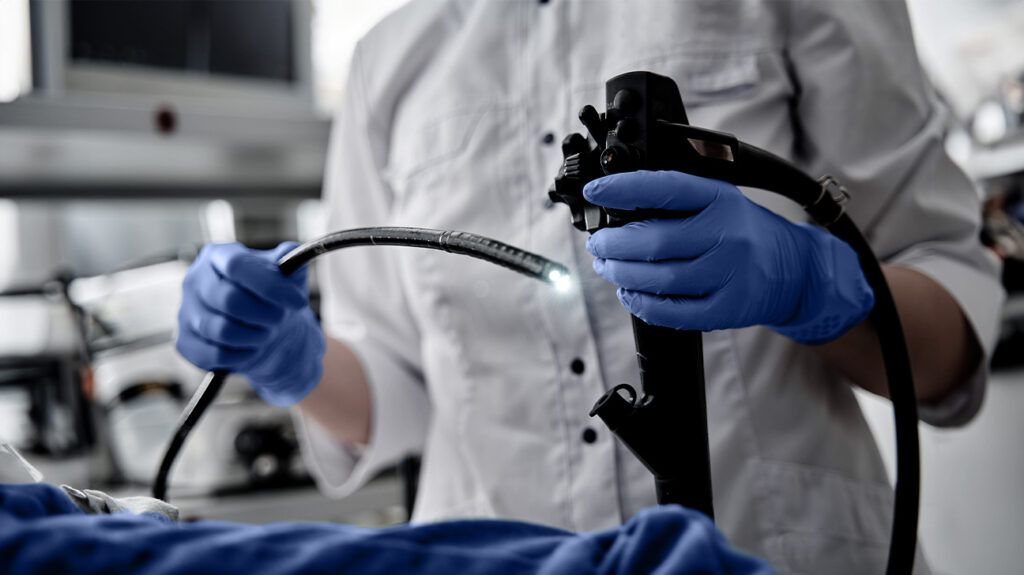Transnasal esophagoscopy (TNE) is a test that helps doctors look into the esophagus and stomach. It involves passing a thin tube through the nose and down the back of the throat.
A TNE allows doctors to assess the gastrointestinal (GI) system when someone reports symptoms such as recurring heartburn or difficulties swallowing. The procedure can help detect signs of GI tract disturbances or atypical features that may explain symptoms.
Specialists can also perform a biopsy during a TNE exam. This allows for the collection of small samples of tissue for laboratory testing.
This article will explain TNE, including when doctors perform it, how to prepare, what someone can expect during the procedure, and associated risks.

A TNE is a test that doctors frequently
Specialists use an endoscope to assess the GI tract. The endoscope enters the body from the nose, going down into the back of the throat and the esophagus to finally reach the stomach. This device has a light and camera attached to its end, meaning the doctor can take clear images of the interior linings of the GI tract.
Doctors usually consider TNE the least invasive type of esophagoscopy. It involves applying a numbing medication to the nose and throat.
Most people tolerate TNE well.
Doctors may recommend TNE for several reasons.
The procedure
- difficulties swallowing, which is known as dysphagia
- nausea
- vomiting
- hoarseness
- persistent heartburn or regurgitation that does not improve or go away after taking antacids or making diet changes
- a continuous feeling of a lump stuck in the throat, which doctors call globus pharyngeus
- a constant cough that does not go away
- constant throat clearing or having excess mucus in the throat
Additionally, TNE can help doctors diagnose if a person has any atypical formations or changes in the stomach or esophagus. This might help explain symptoms.
Specialists may recommend undergoing a TNE if a person has suspected gastroesophageal reflux disease. Alternatively, they may order the test if they need to collect a tissue sample for diagnosing other conditions, including cancer.
TNE does not require any special preparations.
Usually, people only need to ensure their stomach is empty. Therefore, they need to avoid drinking or eating anything for 4 hours before the test unless doctors recommend otherwise.
The doctor will also review the medications a person takes and let them know if they need to stop taking them temporarily. It is best to speak with a doctor before stopping any medications.
This procedure
The following steps describe what people can usually expect during a transnasal esophagoscopy:
- After the person signs a release to give the healthcare professional permission to conduct the TNE, the healthcare professional will spray a numbing medication inside the individual’s nose and throat.
- The healthcare professional will insert the endoscope into a nostril, guiding it down into the throat while the person swallows small sips of water.
- The doctor will slowly move the endoscope into the esophagus while looking for any atypical signs.
- If the healthcare professional notices any atypical features, they may collect a tissue sample or perform other procedures to clear any blockages in the GI tract.
- Once they finish what they are doing, the doctor removes the endoscope. When the endoscope is out, and the effect of the numbing spray wears off, a person can eat and drink as usual.
- The doctor will discuss their findings with the individual and recommend the most appropriate treatment or next steps. They may offer some results straight after the procedure. If further tests are necessary, results might take longer and require a later phone consulation.
After TNE, some people may feel mild discomfort. Taking acetaminophen (Tylenol) may help relieve pain, but a person can consult a doctor for any concerning symptoms or intense discomfort afterward.
TNE is a safe procedure, and the risk of complications is usually minimal. The
In some rare cases, other possible risks and complications may occur. These include:
TNE is a test doctors use to assess the esophagus and stomach. It involves passing an endoscope into the nose and down the throat until it reaches the GI tract. The endoscope has a light and a camera at its end, meaning it can take images to help doctors diagnose GI symptoms.
It may help determine the underlying cause of persistent heartburn or swallowing issues.
TNE is usually safe and does not cause any serious complications. This procedure does not require general anesthesia. People can usually resume their activities when the numbing agent wears off.
